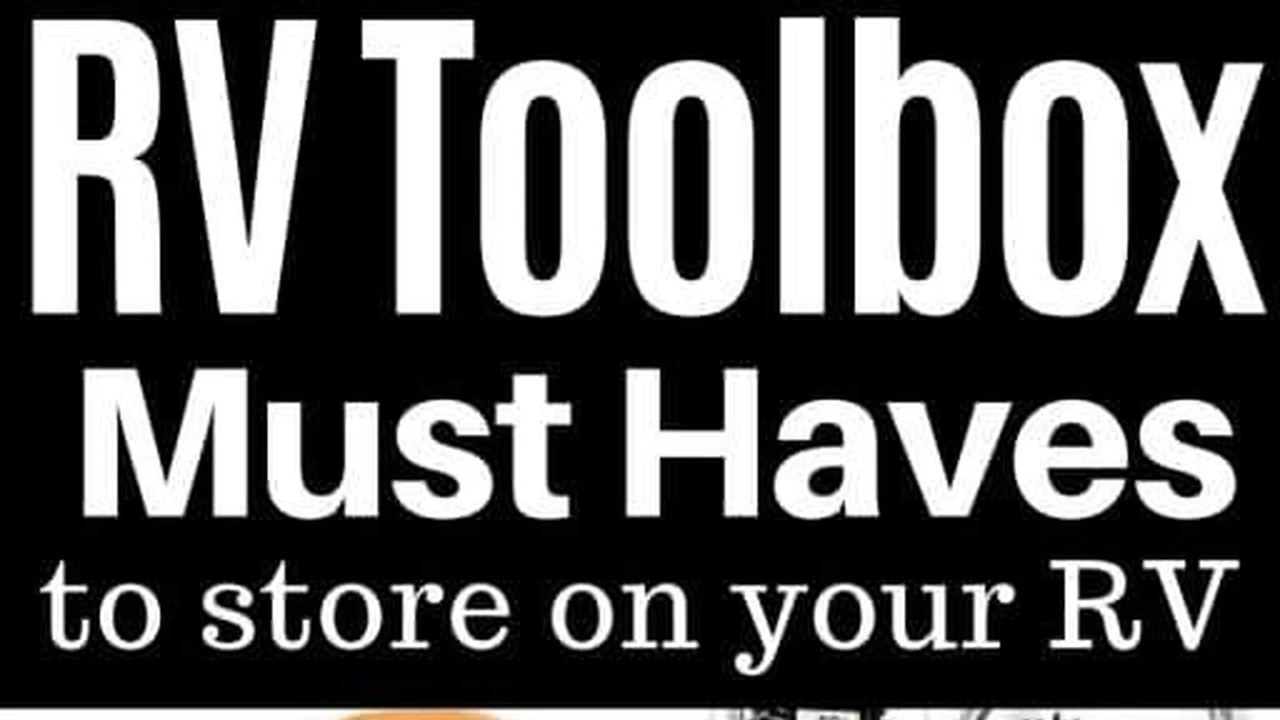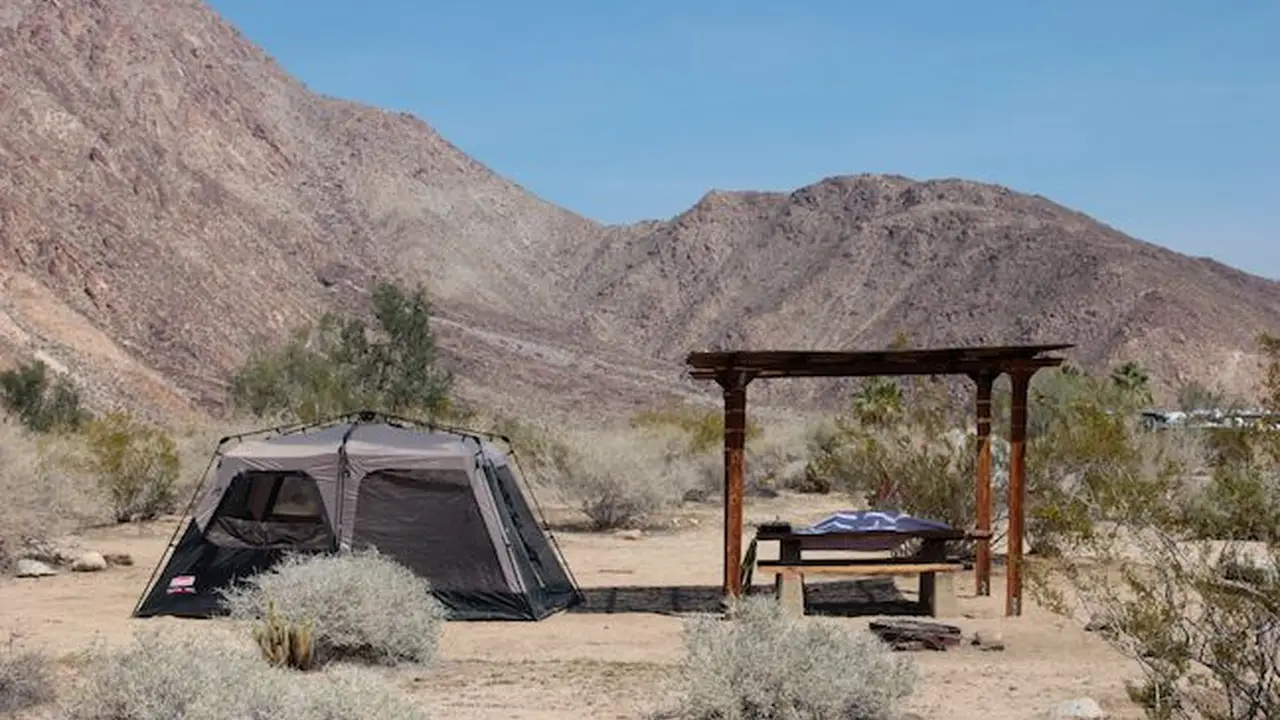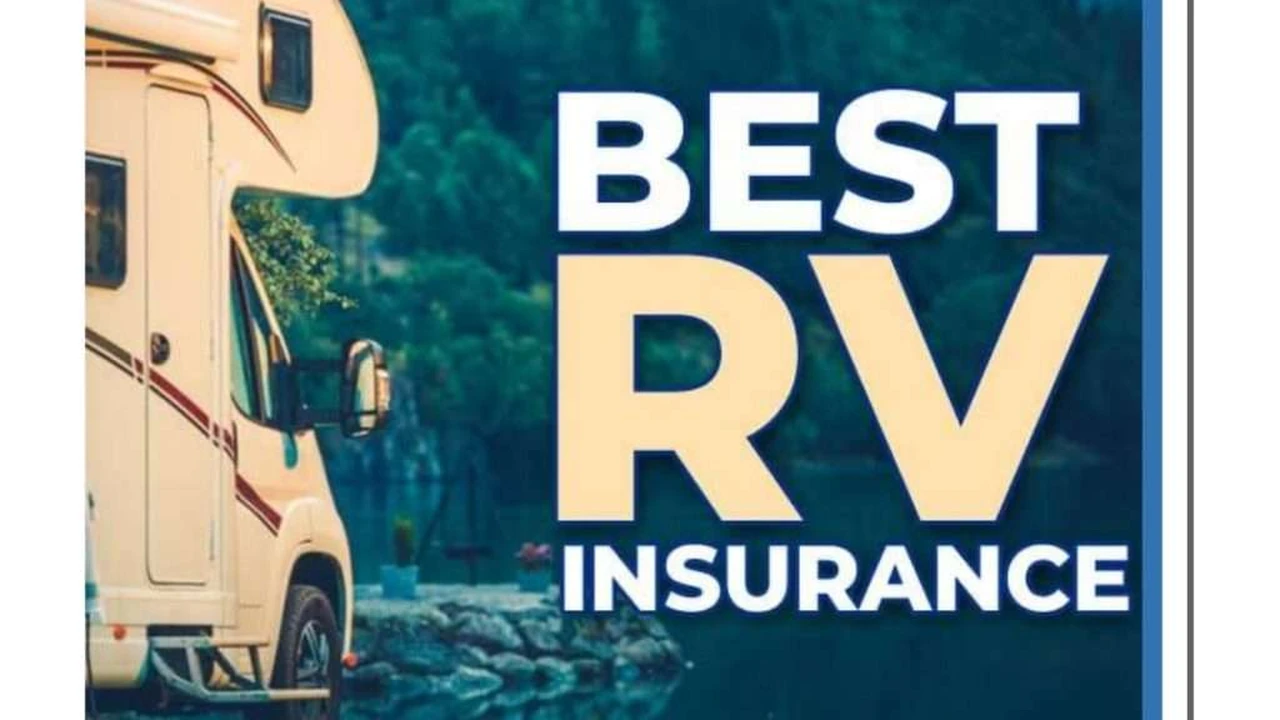Essential RV Tools for California Road Trips

Understanding Your RVs Essential Systems
Before diving into specific maintenance tasks, lets take a moment to understand the core systems that keep your RV running smoothly. These include the electrical system, the plumbing system, and the chassis. Each system requires different types of maintenance, so knowing the basics is crucial.
The Electrical System Powering Your Adventures
Your RV's electrical system is the lifeblood of your on-the-road comfort. It typically comprises two distinct systems: a 12-volt DC system and a 120-volt AC system. The 12-volt system powers things like your lights, water pump, and furnace fan, while the 120-volt system powers appliances like your air conditioner, microwave, and television.
Understanding how these systems interact is key to troubleshooting electrical issues. For example, if your lights are dimming, it could be a sign of a low battery or a problem with the converter. If your air conditioner isn't working, it could be a blown fuse, a tripped circuit breaker, or a problem with the generator.
Regularly checking your battery terminals for corrosion and ensuring your batteries are properly charged are essential maintenance tasks. You should also inspect your wiring for any signs of damage or wear. Consider investing in a multimeter to test voltage and continuity, which can help you diagnose electrical problems quickly.
The Plumbing System Water In and Waste Out
Your RV's plumbing system is responsible for providing you with fresh water and disposing of wastewater. It includes fresh water tanks, a water pump, pipes, faucets, a water heater, and holding tanks for gray water (water from sinks and showers) and black water (water from the toilet).
Maintaining your plumbing system involves sanitizing your fresh water tank regularly, checking for leaks, and preventing freezing in cold weather. You should also use RV-specific toilet paper to avoid clogging your black water tank.
When emptying your holding tanks, always follow proper procedures to avoid spills and odors. Use a sewer hose with a clear elbow to monitor the flow of wastewater. Consider using tank treatments to help break down waste and control odors.
The Chassis Keeping You on the Road
The chassis is the foundation of your RV, providing the structural support and mobility you need for your travels. It includes the frame, suspension, tires, brakes, and steering system.
Regularly inspecting your tires for wear and tear and maintaining proper tire pressure are crucial for safety and fuel efficiency. You should also check your brakes for signs of wear and have them serviced as needed.
Lubricating your chassis components according to the manufacturer's recommendations is essential for preventing premature wear and tear. You should also inspect your suspension for any signs of damage or sagging.
Essential RV Maintenance Tasks A Step-by-Step Guide
Now that you have a basic understanding of your RV's systems, let's dive into some essential maintenance tasks that you should perform regularly.
RV Roof Maintenance Protecting Your Investment
Your RV's roof is its first line of defense against the elements. Inspecting it regularly for leaks, cracks, and damage is crucial for preventing water damage.
Cleaning Your RV Roof The Right Way
Use a mild soap and water solution to clean your RV roof. Avoid using harsh chemicals or abrasive cleaners, as they can damage the roofing material. Use a soft-bristled brush to scrub away dirt and debris.
Inspecting and Sealing Seams and Sealants
Carefully inspect all seams and sealants on your RV roof for cracks or gaps. Use a high-quality RV sealant to repair any damaged areas. Dicor self-leveling sealant is a popular choice for RV roofs.
Product Recommendation: Dicor Self-Leveling Lap Sealant
Use Case: Sealing cracks and gaps on RV roofs.
Product Comparison: Compared to other sealants, Dicor self-leveling sealant is specifically designed for RV roofs and offers superior UV resistance and flexibility.
Detailed Information: Available in various colors, typically costs around $15-$20 per tube.
Preventing Water Damage The Importance of Regular Inspections
Regular roof inspections can help you identify and repair potential problems before they lead to costly water damage. Make it a habit to inspect your roof at least twice a year, or more often if you live in an area with harsh weather conditions.
RV Tire Maintenance Ensuring Safe Travels
Your RV's tires are responsible for carrying the weight of your vehicle and providing traction on the road. Proper tire maintenance is essential for safety and fuel efficiency.
Checking Tire Pressure The Key to Longevity
Check your tire pressure regularly using a tire pressure gauge. Inflate your tires to the recommended pressure, which can be found on the tire sidewall or in your RV's owner's manual.
Inspecting Tires for Wear and Tear
Inspect your tires for signs of wear and tear, such as cuts, bulges, or uneven wear patterns. Replace your tires if they are worn or damaged.
Understanding Tire Age and Replacement
Even if your tires look good, they should be replaced every six to ten years, regardless of mileage. Tire rubber degrades over time, which can lead to blowouts. Check the date code on your tires to determine their age.
Product Recommendation: TPMS (Tire Pressure Monitoring System)
Use Case: Real-time monitoring of tire pressure and temperature.
Product Comparison: Various TPMS options are available, ranging from basic models to more advanced systems with smartphone connectivity. Consider the number of tires you need to monitor and the features that are important to you. EEZTire is a popular brand.
Detailed Information: Prices range from $100 to $500 depending on features and the number of sensors.
RV Battery Maintenance Keeping the Lights On
Your RV's batteries provide power for your lights, appliances, and other electrical devices. Proper battery maintenance is essential for ensuring a reliable power supply.
Cleaning Battery Terminals Removing Corrosion
Clean your battery terminals regularly using a battery terminal cleaner and a wire brush. Corrosion can reduce the flow of electricity and shorten battery life.
Checking Battery Water Levels (for Lead-Acid Batteries)
If you have lead-acid batteries, check the water levels regularly and add distilled water as needed. Avoid overfilling the batteries.
Proper Battery Charging and Storage
Use a high-quality battery charger to charge your RV batteries. Avoid overcharging or undercharging the batteries. When storing your RV for extended periods, disconnect the batteries or use a battery maintainer to prevent them from discharging.
Product Recommendation: NOCO Genius Battery Charger
Use Case: Charging and maintaining RV batteries.
Product Comparison: NOCO Genius chargers are known for their reliability and ease of use. They offer a variety of charging modes for different battery types.
Detailed Information: Prices range from $30 to $200 depending on the model and charging capacity.
RV Water Heater Maintenance Hot Water on Demand
Your RV's water heater provides you with hot water for showers, dishes, and other needs. Proper water heater maintenance is essential for ensuring a reliable hot water supply.
Draining and Flushing the Water Heater
Drain and flush your water heater regularly to remove sediment and mineral buildup. This will help prevent corrosion and improve heating efficiency.
Inspecting the Anode Rod Preventing Corrosion
Inspect the anode rod regularly and replace it as needed. The anode rod is designed to corrode instead of the water heater tank, which helps extend the life of the water heater.
Winterizing Your Water Heater Protecting Against Freezing
Winterize your water heater before storing your RV for the winter. This will help prevent freezing and damage to the water heater.
Product Recommendation: Camco RV Water Heater Tank Rinser
Use Case: Flushing sediment from the RV water heater tank.
Product Comparison: Camco's rinser is a simple and effective tool for cleaning your water heater.
Detailed Information: Typically costs around $10-$15.
RV Air Conditioner Maintenance Staying Cool on the Road
Your RV's air conditioner keeps you cool and comfortable on hot days. Proper air conditioner maintenance is essential for ensuring efficient cooling performance.
Cleaning the Air Conditioner Filters
Clean your air conditioner filters regularly to remove dust and debris. Dirty filters can restrict airflow and reduce cooling efficiency.
Inspecting the Condenser Coils
Inspect the condenser coils for dirt and debris. Clean the coils with a fin comb or a vacuum cleaner.
Checking the Refrigerant Levels
Check the refrigerant levels and add refrigerant if needed. Low refrigerant levels can reduce cooling performance. This is best left to a professional.
Product Recommendation: Air Conditioner Fin Comb
Use Case: Straightening bent fins on the air conditioner condenser.
Product Comparison: Universal fin combs work on most air conditioner units.
Detailed Information: Typically costs around $5-$10.
RV Awning Maintenance Extending Your Living Space
Your RV's awning provides shade and extends your living space. Proper awning maintenance is essential for keeping it in good condition.
Cleaning the Awning Fabric
Clean the awning fabric regularly with a mild soap and water solution. Avoid using harsh chemicals or abrasive cleaners.
Inspecting the Awning Hardware
Inspect the awning hardware for damage or wear. Lubricate the moving parts with a silicone lubricant.
Proper Awning Storage
Store the awning properly when not in use to protect it from the elements.
Product Recommendation: 303 Aerospace Protectant
Use Case: Protecting the awning fabric from UV damage and fading.
Product Comparison: 303 Aerospace Protectant is a popular choice for protecting RV awnings and other outdoor fabrics.
Detailed Information: Prices range from $20-$30 per bottle.
Troubleshooting Common RV Problems A Practical Guide
Even with regular maintenance, you may encounter problems with your RV from time to time. Here are some common RV problems and how to troubleshoot them.
No Power Troubleshooting Electrical Issues
If you have no power in your RV, check the following:
- Check the shore power connection.
- Check the circuit breakers and fuses.
- Check the battery connections.
- Check the generator.
Water Leaks Identifying and Repairing Leaks
If you have a water leak in your RV, identify the source of the leak and repair it as soon as possible. Common sources of water leaks include:
- Roof seams
- Window and door seals
- Plumbing connections
Appliance Malfunctions Diagnosing and Fixing Issues
If your RV appliances are not working properly, check the following:
- Check the power supply.
- Check the gas supply.
- Check the appliance controls.
Slide-Out Problems Addressing Sticking and Movement Issues
If your RV slide-out is not working properly, check the following:
- Check the power supply.
- Check the slide-out mechanism.
- Check for obstructions.
Essential RV Tools and Supplies A Must-Have Checklist
Having the right tools and supplies on hand can make RV maintenance and repairs much easier. Here is a list of essential RV tools and supplies:
- Multimeter
- Tire pressure gauge
- Wrench set
- Screwdriver set
- Pliers
- Socket set
- RV sealant
- Duct tape
- Electrical tape
- Battery terminal cleaner
- Water heater anode rod
- RV toilet paper
- Tank treatment
Product Recommendation: Stanley Mechanics Tool Set
Use Case: General RV repairs and maintenance.
Product Comparison: Stanley is a reputable brand known for quality tools.
Detailed Information: Prices vary depending on the number of pieces, typically ranges from $50-$200.
Preventative RV Maintenance Tips Proactive Care for Longevity
Preventative maintenance is the key to keeping your RV in good condition and avoiding costly repairs. Here are some preventative maintenance tips:
- Inspect your RV regularly for any signs of damage or wear.
- Perform routine maintenance tasks according to the manufacturer's recommendations.
- Address any problems promptly before they become more serious.
- Store your RV properly when not in use.
RV Maintenance Schedule A Checklist for Regular Care
Creating a maintenance schedule can help you stay on top of your RV maintenance tasks. Here is a sample RV maintenance schedule:
Monthly Maintenance Tasks
- Check tire pressure.
- Check battery water levels (if applicable).
- Clean air conditioner filters.
Quarterly Maintenance Tasks
- Inspect roof seams and sealants.
- Inspect tires for wear and tear.
- Clean battery terminals.
Annual Maintenance Tasks
- Drain and flush water heater.
- Inspect anode rod.
- Lubricate chassis components.
- Inspect brakes.
Winterizing Your RV Protecting Against Freezing Temperatures
Winterizing your RV is essential for protecting it from freezing temperatures. Here are the steps involved in winterizing your RV:
- Drain all water from the plumbing system.
- Add RV antifreeze to the plumbing system.
- Remove batteries and store them in a warm place.
- Cover the RV with a RV cover.
Product Recommendation: Camco RV Antifreeze
Use Case: Protecting RV plumbing from freezing during winter storage.
Product Comparison: Camco RV Antifreeze is a non-toxic antifreeze specifically designed for RV plumbing systems.
Detailed Information: Prices range from $10-$15 per gallon.
Summerizing Your RV Preparing for Warm Weather Adventures
Summerizing your RV is essential for preparing it for warm weather adventures. Here are the steps involved in summerizing your RV:
- Sanitize the fresh water tank.
- Check the air conditioner.
- Check the refrigerator.
- Inspect the tires.
Finding RV Maintenance Resources Online and Offline
There are many resources available to help you with RV maintenance. Here are some online and offline resources:
- RV forums and online communities
- RV service centers
- RV owner's manuals
- RV maintenance books
- RV maintenance videos
RV Maintenance Costs Budgeting for Repairs and Upkeep
RV maintenance costs can vary depending on the age and condition of your RV, as well as the amount of use it gets. Here are some tips for budgeting for RV maintenance:
- Set aside a certain amount of money each month for RV maintenance.
- Keep track of your RV maintenance expenses.
- Prioritize essential maintenance tasks.
DIY RV Maintenance vs Professional Service Knowing When to Call for Help
Some RV maintenance tasks can be performed by RV owners, while others are best left to professional service technicians. Here are some guidelines for deciding when to DIY and when to call for help:
- If you are comfortable working on your RV and have the necessary tools and skills, you can perform some maintenance tasks yourself.
- If you are not comfortable working on your RV or if the task is complex or requires specialized tools, it is best to call a professional service technician.
RV Storage Tips Protecting Your Investment During Downtime
Proper RV storage is essential for protecting your investment during downtime. Here are some RV storage tips:
- Store your RV in a covered or enclosed area.
- Clean the RV thoroughly before storing it.
- Cover the RV with an RV cover.
- Remove batteries and store them in a warm place.
- Drain all water from the plumbing system.
Extending the Life of Your RV Maximizing Your Investment
By following these RV maintenance tips, you can extend the life of your RV and maximize your investment. Regular maintenance will help you avoid costly repairs and keep your RV running smoothly for years to come. Happy travels!
:max_bytes(150000):strip_icc()/277019-baked-pork-chops-with-cream-of-mushroom-soup-DDMFS-beauty-4x3-BG-7505-5762b731cf30447d9cbbbbbf387beafa.jpg)





